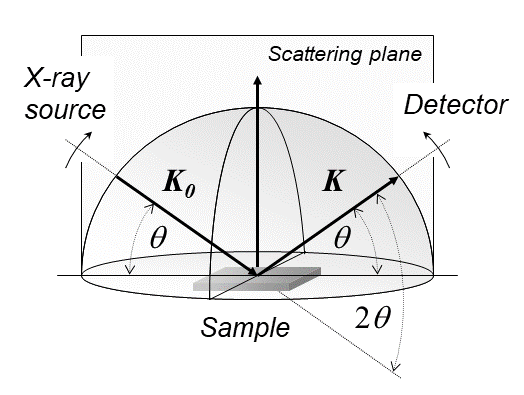Facts for Kids
X-ray diffraction is a technique used to investigate the atomic structure of crystalline materials by observing the patterns formed when X-rays are scattered by the crystal lattice.
Overview
Challenges And Limitations
History Of X Ray Diffraction
Role In Biology And Medicine
X Ray Diffraction Techniques
Principles Of X Ray Diffraction
Applications In Material Science
Data Analysis And Interpretation
Future Developments In X Ray Diffraction

Inside this Article
William Lawrence Bragg
Rosalind Franklin
Nanotechnology
Interference
Diffraction
Information
Electronics
Temperature
X-ray
Did you know?
🔬 X-ray diffraction is a powerful technique used to study the structure of crystalline materials.
📏 The phenomenon occurs when X-rays are scattered by the periodic arrangement of atoms in a crystal.
💡 The angles and intensities of the scattered X-rays provide information on the crystal's atomic structure.
🔍 X-ray diffraction patterns are typically recorded on photographic film or digital detectors.
🧪 This technique is essential in fields such as materials science, chemistry, and biology.
🌍 X-ray diffraction can be used to analyze minerals, metals, and biological macromolecules like proteins.
📐 The ability to determine the arrangement of atoms has profound implications for developing new materials.
🛠️ Synchrotron radiation sources produce extremely bright X-rays, enhancing the resolution of diffraction studies.
🔄 The Bragg's Law equation, nλ = 2d sin(θ), describes the condition for constructive interference in diffraction.
🧬 X-ray crystallography, a subset of X-ray diffraction, has provided insights into the 3D structures of many biomolecules, including DNA.
Introduction
It helps scientists understand the structure of tiny things like crystals, minerals, and even proteins. The name "X-ray" comes from the type of light it uses — something our eyes can't see but that can go through different materials. When X-rays hit a sample, they bounce off in different directions, just like how light bends when it hits glass. 🌈
This bending creates a pattern called a diffraction pattern, which tells scientists how the atoms are arranged!
Challenges And Limitations
For example, not all materials form perfect crystals, which makes it hard to get clear patterns. Some samples might also absorb X-rays instead of allowing them to pass through, leading to weak signals. 🌪
️ Additionally, complex materials with many components can create complicated patterns that are difficult to interpret. Scientists spend a lot of time figuring out these issues, but they keep improving techniques to overcome these limitations!
History Of X-ray Diffraction
Max von Laue was from Germany, and the Braggs were from England. They used X-rays on a crystal of copper sulfate and saw patterns! 🔍
Their discovery helped them win the Nobel Prize in Physics by 1915! This was a significant moment in science because it opened up new ways to explore materials, making it easier to understand the building blocks of everything around us.
Role In Biology And Medicine
It helps scientists understand how proteins and other biological molecules work. For example, the structure of DNA was discovered using X-ray diffraction by Rosalind Franklin and Maurice Wilkins. 🧬
Knowing how these structures look helps researchers develop medicines and treatments! X-ray diffraction is also used to study viruses and bacteria, helping doctors create vaccines. So, when someone feels sick, scientists can figure out how to make them better, all thanks to the power of X-ray diffraction!
X-ray Diffraction Techniques
️ Additionally, there are advanced methods like "synchrotron radiation," which uses super-bright X-rays from a particle accelerator. 💥
These techniques allow for more detailed information about materials, leading to better discoveries in science!
Principles Of X-ray Diffraction
It states that when the angle of X-ray hitting the crystal is right, constructive interference occurs! This results in bright spots on a film or detector, allowing scientists to determine the structure of the material.
Applications In Material Science
For example, they can identify how minerals are arranged in rocks or how metals are structured. This information is important for building things, like bridges and airplanes. Also, X-ray diffraction helps create stronger materials. For instance, it's used in making high-tech gadgets like smartphones and laptops! 💻
This technology can also reveal how different materials behave under various conditions, like temperature changes. Discovering and understanding these structures has allowed us to create new materials that improve our world!
Data Analysis And Interpretation
Scientists process the patterns using computer programs to turn them into useful information. They analyze the angles and intensities of the spots created by the X-rays. This data tells scientists the distance between atoms and how they are arranged. Knowing how to read these patterns helps scientists identify unknown materials or refine their understanding of known ones! 📊
This information can lead to important discoveries, affecting fields like energy, electronics, and medicine.
Future Developments In X-ray Diffraction
Scientists are developing new technology to make X-ray beams even brighter and more focused. This will help them study smaller samples and gather more details quickly! 🕒
Moreover, researchers are exploring how X-ray diffraction can be combined with other techniques, like electron microscopy, for a better understanding of materials. ⚛
️ These advancements might lead to new discoveries in medicine, renewable energy, and nanotechnology! The possibilities are endless, and who knows what exciting things we will learn next!

